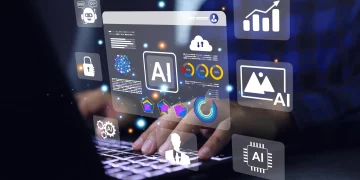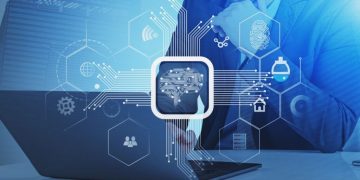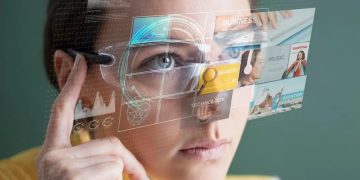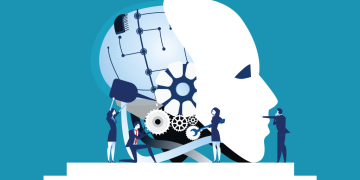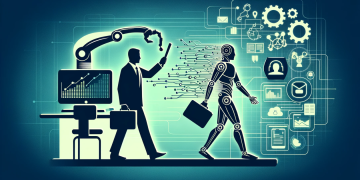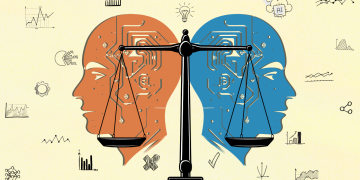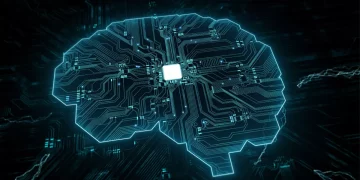Introduction:
The integration of Artificial Intelligence (AI) in healthcare is rapidly transforming the industry, particularly in the realm of disease diagnosis. AI has the potential to significantly improve how diseases are diagnosed, with a focus on early detection, which is critical for effective treatment and better patient outcomes. With its ability to process vast amounts of medical data quickly, identify patterns that are often too subtle for the human eye, and assist clinicians in decision-making, AI is reshaping the landscape of diagnostics.
In this article, we will explore how AI technology is achieving breakthroughs in early disease diagnosis, examining the various tools and approaches being utilized, the challenges encountered, and the future potential of AI in revolutionizing healthcare.
1. AI and the Promise of Early Disease Detection
The earlier a disease is detected, the better the prognosis for the patient. Early diagnosis allows for timely interventions, more effective treatments, and improved survival rates, especially in the case of diseases such as cancer, cardiovascular diseases, and neurodegenerative disorders. However, detecting these diseases in their early stages is often a challenge due to the subtlety of early symptoms or the limitations of traditional diagnostic tools.
AI is playing a pivotal role in addressing these challenges by using advanced algorithms, machine learning, and deep learning techniques to analyze medical data and identify patterns that would be difficult or impossible for a human clinician to detect. By doing so, AI is enabling earlier and more accurate diagnoses across various diseases.
1.1. Machine Learning and Pattern Recognition
Machine learning (ML) algorithms, particularly deep learning models, are designed to recognize patterns in large datasets. In healthcare, these patterns are often found in medical imaging, genetic data, electronic health records (EHRs), and clinical trial results. For example, ML algorithms can be trained to detect minute changes in medical imaging, such as X-rays, CT scans, and MRIs, which can indicate the presence of a disease before visible symptoms even appear.
For instance, in oncology, early-stage cancers may not present obvious signs, but AI models trained on vast amounts of medical imaging data can identify microscopic tumors or other indicators that suggest the onset of cancer. Similarly, AI models are being applied to cardiology to detect early signs of heart disease, such as arrhythmias or blockages, by analyzing heart images, ECGs, and other data.
2. AI Applications in Disease Early Diagnosis
Several AI applications have demonstrated immense potential in the early diagnosis of various diseases. Here are some key areas where AI is already making an impact:
2.1. AI in Cancer Detection and Diagnosis
Cancer detection is one of the most significant areas where AI is making strides in early diagnosis. Early detection of cancer significantly increases the chances of successful treatment and survival. AI-powered diagnostic tools are being used to analyze medical imaging, biopsies, and even genetic data to identify cancers at their earliest stages.
2.1.1. Medical Imaging and AI
AI models, especially deep learning algorithms, have been particularly successful in interpreting medical imaging such as mammograms, CT scans, and MRIs. These models are able to identify abnormalities that may be missed by the human eye. For instance, AI models have demonstrated exceptional accuracy in detecting breast cancer from mammograms. One study found that AI systems outperformed radiologists in identifying early breast cancer by reducing both false positives and false negatives.
Similarly, AI is being used in lung cancer diagnosis, where deep learning models analyze CT scans to detect early nodules and other abnormalities. Researchers are also exploring AI’s ability to identify early signs of colorectal cancer using colonoscopy images and other diagnostic data.
2.1.2. Genetic Data and AI
Beyond imaging, AI is increasingly being applied to genetic data to detect cancer-related mutations before the disease manifests clinically. AI-driven tools can analyze large volumes of genetic sequencing data to identify mutations or abnormalities associated with cancer. For example, genetic testing for BRCA mutations (associated with breast and ovarian cancer) can help identify individuals at high risk before symptoms appear, enabling early interventions or preventive measures.
2.2. AI in Cardiovascular Disease Diagnosis
Cardiovascular diseases, such as heart attack, stroke, and coronary artery disease, are major contributors to global mortality rates. Early detection of cardiovascular diseases can help prevent life-threatening events and improve patient outcomes. AI is increasingly being used to enhance the diagnostic process in cardiology by analyzing various data sources like electrocardiograms (ECGs), heart imaging, and patient health records.
2.2.1. AI-Driven Electrocardiogram (ECG) Interpretation
ECGs are commonly used to diagnose heart conditions, but analyzing ECGs can be complex and time-consuming. AI algorithms are being applied to interpret ECGs with greater accuracy and speed, often detecting irregularities that could indicate underlying cardiovascular problems. These AI models can also help predict the likelihood of a heart attack or arrhythmia before clinical symptoms emerge, allowing for earlier intervention.
2.2.2. AI in Heart Imaging
AI has also shown promise in analyzing heart imaging, such as echocardiograms and cardiac MRIs, to detect early signs of heart disease. Deep learning algorithms can identify structural changes in the heart and blood vessels, such as plaque buildup or damage to the heart muscle, which are often precursors to serious cardiovascular events like strokes and heart attacks.
2.3. AI in Neurological Disease Diagnosis
Neurological diseases, particularly Alzheimer’s disease, Parkinson’s disease, and multiple sclerosis, are difficult to diagnose early due to their gradual onset and the lack of visible symptoms in the early stages. AI is making significant progress in identifying subtle changes in the brain that can indicate the onset of these diseases long before symptoms appear.
2.3.1. AI in Alzheimer’s Disease Diagnosis
AI-powered models are being used to analyze brain scans (such as MRIs) and identify early signs of Alzheimer’s disease or other forms of dementia. By detecting changes in brain structures, such as hippocampal atrophy, AI algorithms can flag potential cases of Alzheimer’s years before patients start to show noticeable cognitive decline. Furthermore, AI can also analyze genetic data to predict an individual’s likelihood of developing Alzheimer’s, enabling preventative care measures.
2.3.2. Predictive AI Models for Parkinson’s Disease
Parkinson’s disease, which affects movement and motor control, can also be challenging to diagnose in its early stages. AI systems are being developed to analyze movement patterns, speech patterns, and facial expressions, which can all show subtle early signs of Parkinson’s. Researchers are exploring the use of machine learning to develop predictive models that could identify individuals at risk for Parkinson’s long before symptoms become apparent.
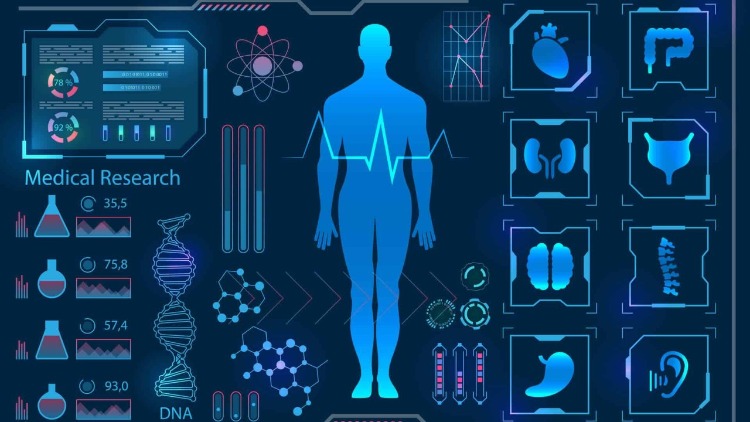
3. Challenges in AI-Powered Disease Diagnosis
While AI is making significant strides in early disease diagnosis, there are still several challenges to overcome before it can be fully integrated into clinical practice:
3.1. Data Quality and Access
AI systems rely heavily on high-quality, accurate data. In many cases, healthcare data is fragmented across different systems, and standardizing or integrating data from various sources can be challenging. Additionally, the quality of the data used to train AI models is critical to their accuracy. Inaccurate, incomplete, or biased data can lead to faulty predictions or diagnoses.
3.2. Regulatory and Ethical Considerations
AI-driven diagnostic tools must comply with regulatory standards, including those set by the FDA (Food and Drug Administration) and EMA (European Medicines Agency). Ensuring that these tools are safe, effective, and transparent is a complex task, and regulatory bodies must work alongside developers to create guidelines that ensure patient safety.
Moreover, ethical concerns surrounding AI in healthcare, such as privacy, data security, and bias in AI algorithms, need to be addressed. For instance, AI models may inadvertently perpetuate healthcare disparities if they are trained on biased datasets that do not represent diverse populations adequately.
3.3. Acceptance by Healthcare Providers
Although AI-powered diagnostic tools show promise, their adoption in clinical settings is still relatively slow. Many healthcare providers remain skeptical about the accuracy and reliability of AI systems, particularly when it comes to complex medical decision-making. Moreover, there is a need for proper training and integration of AI tools into the existing healthcare infrastructure.
4. The Future of AI in Disease Early Diagnosis
As AI technology continues to evolve, the potential for breakthroughs in early disease diagnosis is vast. In the future, we can expect more personalized and precise diagnostic tools that can not only detect diseases early but also predict individual disease risks based on a wide range of factors, including genetics, lifestyle, and environmental exposures.
Furthermore, with the rise of wearable health devices and remote patient monitoring, AI could be integrated into everyday healthcare, enabling continuous monitoring and real-time diagnosis of health conditions before they escalate. The combination of AI with telemedicine could also improve access to diagnostic services, particularly in underserved areas.
Conclusion: A New Era in Healthcare
AI technology is revolutionizing the healthcare industry by enabling earlier and more accurate disease diagnoses. From cancer to cardiovascular diseases to neurological disorders, AI-powered diagnostic tools are helping clinicians detect diseases at their earliest stages, improving patient outcomes and saving lives. While challenges remain, including data quality, regulatory hurdles, and acceptance within the medical community, the future of AI in early disease diagnosis looks incredibly promising. As the technology continues to improve, AI will play an increasingly vital role in the early detection and prevention of diseases, ushering in a new era of personalized, precision medicine.




